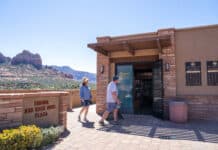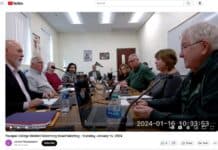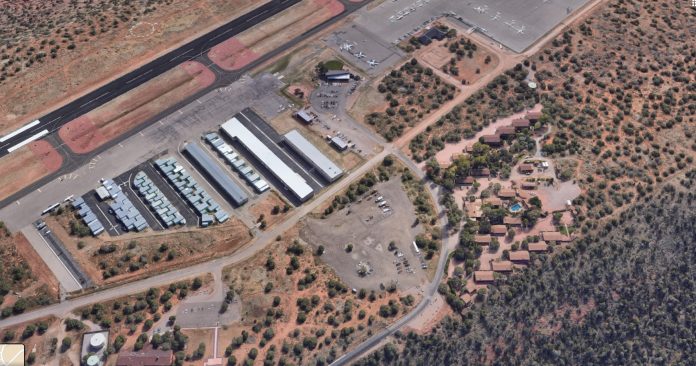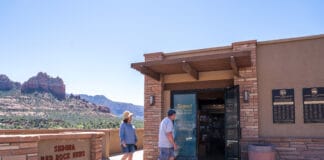The city of Sedona is looking into purchasing the Sedona Airport from Yavapai County and has begun seeking consulting services to fully understand what the purchase and operation of the airport would entail.
“The city is embarking upon a due diligence process to better understand the implications of a possible acquisition of the airport,” Sedona City Manager Karen Osburn stated.
The Sedona Airport has long contributed to tourism and growth in the city of Sedona; however, the airport has always been owned by Yavapai County, in spite of the fact that the airport sits less than 1/4 mile from the nearest Sedona residence, affects many of the economic and quality of life factors for the city of Sedona and is inside city limits.
“There is currently little regulatory oversight by the city despite the airport being located in the middle of our community,” Osburn said. “Both Yavapai County and the city of Sedona agree that future decision-making about the airport should be made by the local jurisdiction whose residents are more directly impacted by those decisions.”
In addition to the financial implications, the city is also looking at how to structure the ownership of the airport should it go ahead with the purchase.
Currently the Sedona-Oak Creek Airport Authority nonprofit operates the airport largely on its own, in accordance with guidelines and regulations set by the Federal Aviation Administration, the Arizona Department of Transportation and Yavapai County.
Yavapai County currently owns and operates two airports in addition to its lease with SOCAA for the Sedona Airport.
“The city has no experience in this arena and seeks to understand everything airport. Tall order,” the airport’s general manager Ed Rose said.
Currently the city of Sedona is taking on that tall order by hiring a consultant to better understand what airport ownership would entail. At this point, however, much of the potential benefit to the city and its residents is largely undetermined.
“The city is doing due diligence to determine if the acquisition of the airport would benefit the community,” Osburn said. “Our residents, businesses and other stakeholders will be asked to weigh in on that prospect before any decisions are made.”
According to Rose, both Yavapai County and the city of Sedona have quite a bit of due diligence ahead of them.
Any agreement must ultimately be approved not only by the county and city, but also by the FAA. “It is also part of the due diligence [process] to determine the financial condition of the airport and future financial implications of ownership to the city,” Osburn said.
The current development of the Sedona Airport covers approximately 230 acres atop Table Top Mountain, aka Airport Mesa, in West Sedona. The site includes the Sky Ranch Lodge, Mesa Grill, one terminal, a defunct Masonic Lodge, a fuel farm, several hangars, helipads and a 5,130-foot runway.
Airport History
The Sedona Airport was established in 1952 when Ray Steele and Joe Moser began the project with the aid of locals and funding from Yavapai County.
On Sept. 22, 1955, Moser landed the first airplane at what was then called “Oak Creek Airport.” On Oct. 31, 1956, the U.S. Department of Agriculture deeded the mesa to Yavapai County with the intention that it continue to be used for the airport.
In 1957, the Civil Aeronautics Administration, now called the FAA, granted the airport $13,420 to pave its 3,700-foot dirt runway. Thereafter, Sedona Airport developed into a charter and commuter hub for the region.
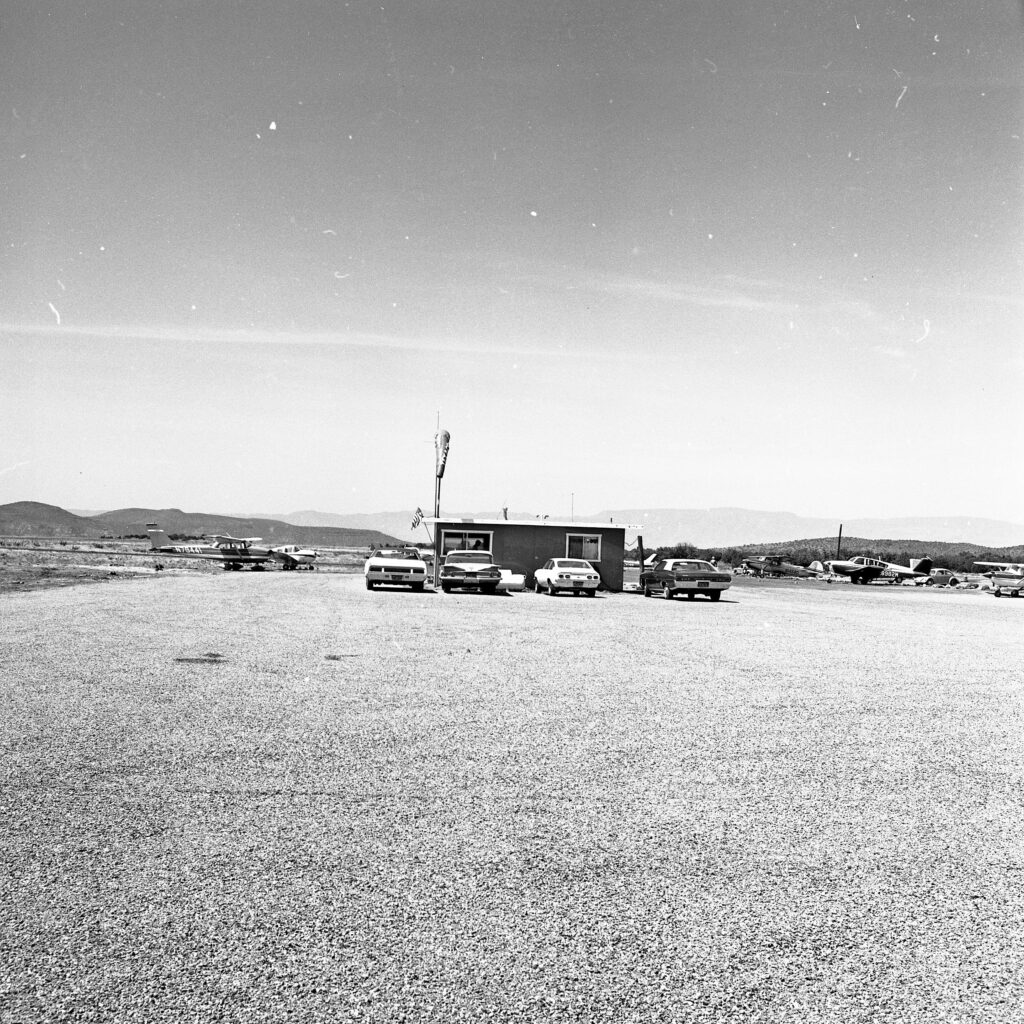
Courtesy Sedona Heritage Museum, #1996.1.11174.
Yavapai County divested itself of operational responsibility for the airport in 1971, choosing instead to sign a 25-year lease with the newly incorporated SOCAA.
By the 1980s, the Sedona Airport had begun to develop into the facility we would recognize today; the airport saw the arrival of its first helicopter and airplane touring services, Sky Ranch Lodge opened its doors and Stretch Maddens Airport Restaurant opened. In addition, the Sedona Airport began to receive updated hangars, modern fuel services and paved taxiways. Eventually, commuter services to other airports, including Phoenix, were discontinued.
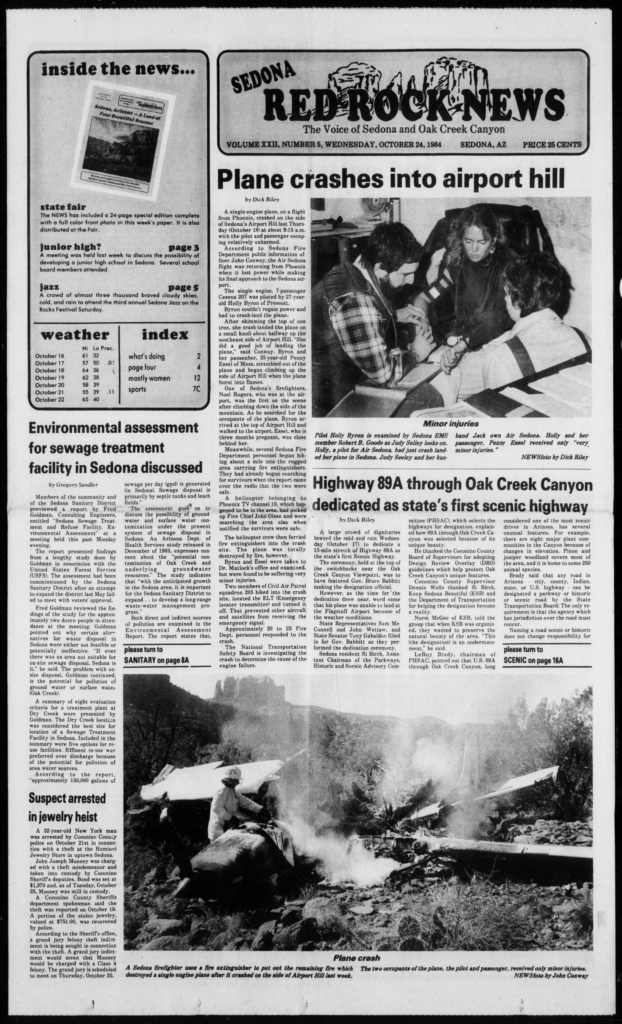
Today, the SOCAA is still operating the Sedona Airport under a lease with Yavapai County. It currently sees 35,000 aircraft takeoffs and landings per year, is used as a U.S. Forest Service firefighting base for three months of the year and can accommodate most modern light jets. In 2020, an ADOT economic impact survey showed that the Sedona Airport had a positive economic impact of $32 million on surrounding areas.
SOCAA is a 501(3)(c) tax-exempt entity that makes the financial information for the airport available to the public on its website. According to Rose, the Sedona Airport receives no funding from Yavapai County for its operation and maintenance; the airport is self-sufficient. The airport generates the revenue needed to fund its operations through its services and by hosting revenue-producing businesses such as the Sky Ranch Lodge and Mesa Grill. In addition, the airport seeks grants and funding from the FAA and ADOT for development and maintenance, helping to stretch its revenue further.
In 2020 the SOCAA received an ADOT grant of $2,422,304 for taxiway improvements. In addition, all revenue the airport receives must be used to support the airport. A federal law passed in 1982 prohibited airport revenue from being diverted to non-airport uses.



